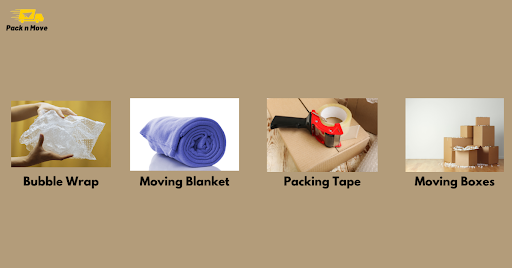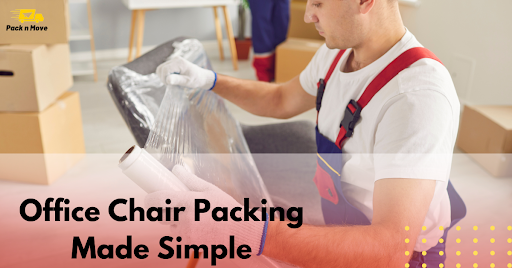Relocating your office is an exciting but challenging process. Among the numerous tasks involved, properly packing office chairs is often overlooked. However, office chairs are not just furniture; they’re essential tools that contribute to employee productivity. Damaging them during a move can lead to unnecessary costs and disruption. This comprehensive guide walks you through the packing process, ensuring your office furniture is safely transported to your new location.
Why Proper Packing of Office Chairs Is Important
Proper packing of office chairs is essential for multiple reasons:
Prevention of Damage
Without adequate protection, office chairs can easily get scratched, dented, or torn during an office relocation. The wear and tear can compromise their functionality and lifespan. Investing time in packing reduces the likelihood of damage, ensuring your furniture arrives intact.
Cost Savings
Damaged chairs may need repairs or replacement, which can strain your relocation budget. Proper packing helps protect your investment, saving you from incurring unnecessary expenses.
Business Continuity
A seamless transition ensures minimal disruption to your operations. With well-maintained office furniture, your team can resume work comfortably and efficiently in the new space.
Taking a structured approach to packing ensures a smooth office move preparation, preserving the productivity and morale of your team.
Essential Packing Materials You’ll Need

Having the right materials on hand simplifies the packing process and protects your furniture. Here’s a checklist of essentials:
- Bubble Wrap: Provides cushioning for fragile components like the backrest and arms.
- Moving Blankets: Ideal for wrapping larger pieces to prevent scratches and dents.
- Packing Tape: Keeps materials securely in place.
- Boxes: Sturdy boxes are crucial for storing smaller, detachable parts.
- Labels and Marker: Helps identify packed components for easy reassembly.
- Tools (Screwdrivers and Wrenches): Necessary for disassembling chairs with removable parts.
- Inventory List: Tracks all packed items, ensuring nothing is left behind.
These materials are essential for a smooth office relocation, ensuring each chair is properly protected and accounted for.
Step-by-Step Guide to Packing an Office Chair
Step 1: Prepare the Chair for Packing
Before you start packing, it’s crucial to prepare your office chairs:
- Clean the Chair
Use a damp cloth or mild cleaning solution to remove dirt and debris. A clean chair ensures that no residue damages the protective materials or the chair itself during transit. - Inspect for Damage
Check for loose screws, cracks, or other signs of wear. Address any issues before packing to avoid exacerbating them during the move. Document any pre-existing damage for reference.
This preparation ensures your chairs are in the best possible condition before packing, simplifying the packing process.
Step 2: Disassemble the Chair (If Necessary)
Most office chairs are designed with detachable components, making them easier to pack. Follow these steps:
- Remove Wheels, Arms, and Headrests
Use screwdrivers or wrenches to detach these parts carefully. Keep all screws and bolts in a labeled bag to avoid losing them. - Separate Larger Parts
The backrest and seat may also be detachable in some models. This reduces the chair’s overall size, making it easier to pack.
Disassembling your chairs not only saves space in the moving truck but also minimizes the risk of damage to fragile parts.
Step 3: Wrap Each Part Securely
Proper wrapping is essential for chair protection during transit:
- Cover Fragile Areas
Use bubble wrap or moving blankets to cover the backrest, arms, and other sensitive areas. Ensure there’s enough padding to absorb shocks during the move. - Secure with Tape
Wrap the protective material tightly and secure it with packing tape. Avoid overusing tape, as it can make unwrapping difficult.
Careful wrapping ensures that even in rough handling, your chairs remain unharmed.
Step 4: Secure with Tape and Labels
Once all parts are wrapped:
- Label Each Component
Use a marker to label each part. For example, write “Chair 1 – Backrest” or “Chair 1 – Wheels.” This makes it easier to identify and reassemble parts. - Bundle Small Parts Together
Place screws, bolts, and other small components in labeled plastic bags. Store these bags in a separate box to avoid losing them.
Proper labeling simplifies reassembly and ensures a hassle-free setup in your new office.
Tips for Packing and Moving Multiple Office Chairs
Relocating multiple chairs requires additional planning. Here are some strategies:
- Stack Disassembled Parts
Group similar parts, such as chair arms and wheels, into labeled bins. This saves space and keeps your moving truck organized. - Use Heavy-Duty Boxes
Store smaller components in sturdy boxes to prevent shifting during transit. Reinforce the boxes with extra tape for added security. - Coordinate with Professionals
Hiring removal experts or removals & storage experts can streamline the process, especially for large-scale moves. They have the experience and tools to handle heavy lifting and ensure proper packing.
These tips help you manage bulk packing efficiently, minimizing stress during the office relocation.
Final Checklist Before Moving
Before loading your moving truck, ensure the following:
- All Chairs Are Disassembled and Packed
Double-check that each chair is wrapped securely and labeled correctly. - Boxes Are Labeled and Organized
Place boxes containing small parts in a designated area for easy access. - Furniture Inventory Is Complete
Cross-check your inventory list to ensure all items are accounted for.
This final review ensures nothing is overlooked, paving the way for a smooth move.
Bonus Tips for Hassle-Free Moving
- Take Photos for Reference
Before disassembling, take photos of each chair to document its setup. These images will help during reassembly. - Consider Professional Help
If you’re short on time or resources, hiring removal experts ensures your furniture is packed and transported safely. - Plan the Loading Process
Load heavier components first, placing lighter items on top. Use straps or padding to secure the load in the moving truck.
By following these tips, you’ll ensure a smooth office transition with minimal disruptions.
Conclusion
Packing office chairs for a move doesn’t have to be overwhelming. By gathering the right packing materials, following a step-by-step approach, and utilizing professional help when needed, you can protect your office furniture and streamline your relocation. Proper packing safeguards your investment, minimizes costs, and ensures your team can resume work without delays.
Frequently Asked Questions (FAQs)
- Why is it important to disassemble office chairs before moving?
Disassembling reduces the size, making chairs easier to pack and transport. It also minimizes the risk of damage during the move. - What tools do I need to disassemble an office chair?
You’ll typically need screwdrivers and wrenches to detach components like wheels, arms, and backrests. - How do I protect fragile parts of the office chair?
Wrap fragile areas with bubble wrap or moving blankets, and secure them with packing tape to prevent scratches and dents. - Can I stack disassembled chair parts to save space?
Yes, stacking labeled parts in bins or boxes is an efficient way to save space and stay organized during the move. - Should I hire professionals to pack and move office chairs?
Hiring removal experts is a great option if you lack time or resources, as they ensure safe and efficient handling of your furniture.
